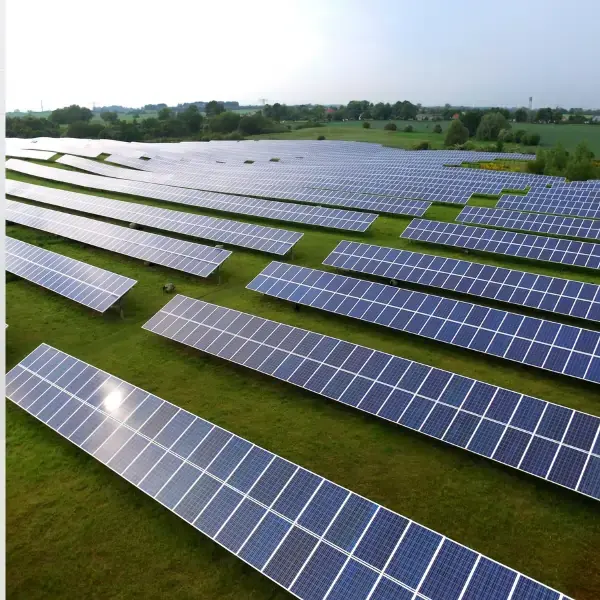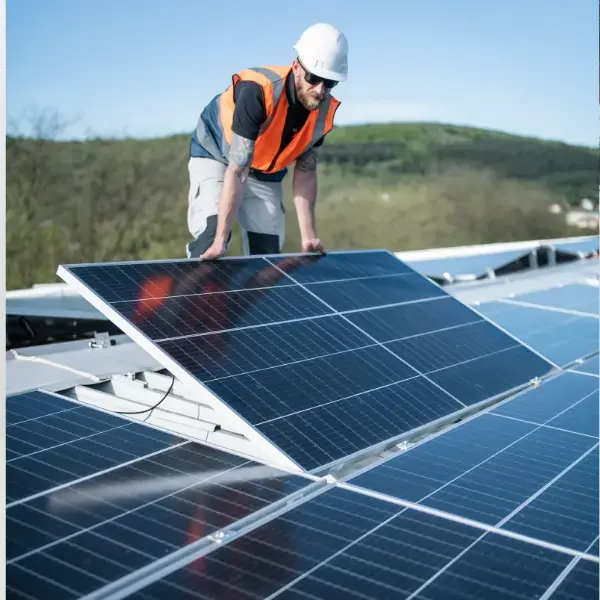Unlock Solar Rebates: A Guide For Commercial Installations
The lower your business's fixed costs are the larger your margins the less you can charge the more profit you can make. A commercial solar system is one of the best ways to lower your business's fixed costs and increase your profits. However, the upfront costs of a commercial solar system can be daunting but don't fret there is a plethora of commercial solar rebates available for businesses throughout NSW and the ACT as well as the rest of Australia.
What is the Difference Between Commercial and Domestic Solar
Before we start talking about commercial solar rebates and installation let's cover the difference between a domestic solar system and commercial solar systems. The major difference is size, both systems will use the same solar panels and similar batteries and inverters. A domestic solar system is usually a 3, 6, or 10kW system whereas a commercial system is larger than 10kW. The main reason a commercial solar system is larger is the demand your home will typically only need energy for 3 or 4 appliances at the same time whereas a commercial system may need to power heavy machinery, multiple computers or servers, lighting, large aircon systems, and security systems that have far higher power needs. Other than size domestic and commercial solar systems are essentially the same.

What Does a Commercial Solar System Include
A commercial solar system is made up of two core parts the photovoltaic panels and the inverter along side these two parts are a series of smaller parts that help ensure the safety and efficiency of the whole system. The parts of a commercial solar system include:
- Photovoltaic Panels:
Solar panels are arguably the most important part of a commercial solar power system as they are what capture solar energy solar panels come in three main types:
- Monocrystalline: these systems use a single silicon crystal making them the most efficient solar panels however they have to be curved which leads to wasted space on the roof meaning once the whole array is installed they are nearly equivalent to a polycrystalline solar panel.
- Polycrystalline: these panels use a layer of silicon instead of a monocrystalline system allowing the panel to fit in a rectangular frame and better pack together on a roof. This will better maximise your business's roof space.
- Thin Film: is the cheapest of the three types of solar panels, however, you get what you pay for they are heavier and less efficient than the other two photovoltaic panel types.
Photovoltaic panels come in various wattages from 350 to 400 watts per panel.
- Isolator Switches:
isolator switches are the most important part of a solar system as they are your first line of defence against solar panel fires. As when solar panels play up the isolator will cut the panel off and greatly reduce the damage to the rest of the system protecting your business.
- Solar Inverter:
Solar panels output a DC electrical current however your business will require an AC this is where a solar inverter comes in they concert the DC your solar system outputs into a usable AC inverters also can control how much energy you put into your system and feed energy back into the grid or use grid energy when your solar system cant output enough or control the power that goes into a solar battery system.
- Solar Batteries:
solar batteries let you get the most out of your solar system as a system without batteries can only make use of the energy used by a system at that time any extra energy will be wasted. A system with batteries will take that wasted energy and store it for when it is needed. Batteries also better protect your system for overcast days as they can provide the extra energy needed when your solar panels aren't able to put out enough power.
These systems make up the core parts of your commercial solar system however when you combine all these components the cost of a solar system can begin to rack up however these costs greatly diminish when you take into consideration the plethora of rebates and low-interest loans offered throughout Australia.

What Rebates are Available
Both Australian and State level governments offer rebates and incentives for commercial solar system installations. These rebates include:
- Small-scale Renewable Energy Scheme (Aus):
The Australian government organises this scheme and covers all of Australia for most installations and upgrades of a solar system up to 100kW. On upgrade of installation of a Clean Energy Council-approved solar system by a Solar Accreditation Australia accredited installer, you will receive a certain number of small-scale technology certificates (STC). these STCs are then valued based on the projected future electricity production of the system. This projection is based on the size of the system and what climate zone your business is in.
- Sustainable Business Program (ACT):
Is an Australian Capital Territory-only rebate and offers up to $13,000 worth of rebates. These rebates require you to have a technical expert come to your business and provide free advice as to how to improve your business's energy efficiency. You will then gain access to up to $13,000 worth of rebates broken up into $10,000 in energy efficient conversions and solar installation and $3,000 towards EV charger installation. This rebate will also provide you with a certificate recognition for your inclusion in the program and your businesses steps towards a greener operation.
Other states in Australia also offer incentives which can be found on the energy.gov.au website.
If you want to see how your business can leverage solar power for lower fixed costs and increased profits contact the team at Innovate Energy.